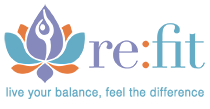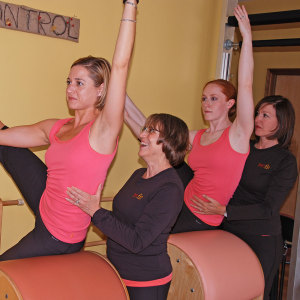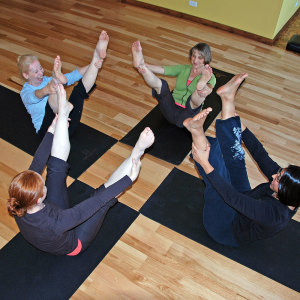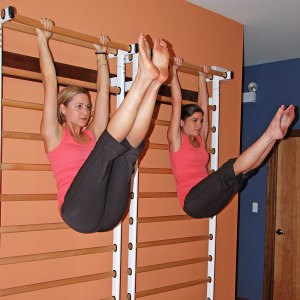
Physical Therapy
What do physical therapists do?
Why are people referred to physical therapy?
You and others may be referred to physical therapy because of a movement dysfunction associated with pain. Your difficulty with moving part(s) of your body (like bending at the low back or difficulty sleeping on your shoulder, etc.) likely results in limitations with your daily activities. Physical therapy addresses these movement dysfunctions to restore your body’s ability to move in a normal manner.
Why is physical therapy a good choice?
Physical therapy treats not only pain but also its source. Physical therapists are experts at treating movement and neuro-musculoskeletal disorders. Pain often accompanies a movement disorder, which physical therapists can help correct.
What types of physical therapy are offered at re:fit?
Orthopedic Physical Therapy – Care for post-surgical patients, arthritis, tendonitis/tendinosis, fracture rehabilitation, muscle sprains and strains, neck and back pain, hip and knee problems, shoulder, elbow, and wrist conditions.
Manual Therapy – Manual therapy describes a variety of hands-on treatment techniques that are applied to movement dysfunctions. Most physical therapists incorporate manual therapy techniques as a part of a complete treatment plan. Integrative Manual Therapy (IMT) uses these techniques in addition to addressing the psycho/social/emotional and thought energies that cause pain and dysfunction.
Fitness and Wellness – If you need an exercise program, have trouble with your weight, are concerned about osteoporosis, have an issue with diabetes, or you would like to learn how to prevent falls, physical therapists can help.
Lymphedema Rehabilitation – The lymph system helps filter and drain fluid from our arms and legs. When this drainage system is damaged, Lymphedema is the painful swelling that can result. Special positioning, massage and bandaging techniques are utilized by the specialist. We are one of two providers in Illinois that have the vacuodermie and pressurotherapy machines to assist in lymphedema reduction.
Can I go directly to my physical therapist?
Illinois allows patients to go directly to physical therapists. In most cases, if you are not making significant improvement within 30 days, the therapist will refer you to or back to your physician.
Is my therapist licensed?
Physical therapists (PTs) and physical therapist assistants (PTAs) at re:fit are licensed by their respective states.
What happens during my first visit?
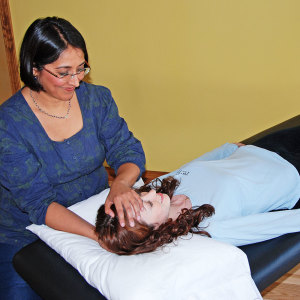
Your first visit is an initial evaluation by the physical therapist. You will discuss your medical history (medications, tests and procedures you have had recently), your current problems/complaints, the intensity of the pain you are experiencing and what aggravates and what eases the problem, your functional limitations (how the problems impact your daily activities), and most importantly, your treatment goals.
As time allows, some treatment occurs in the first session. This includes gentle mobility testing, as well as assessing various rhythms in tissues specific to your treatment goals. We will differentiate the primary dysfunction leading to the complaint: biomechanics, physiology, or emotional holdings. We will also locate the primary system or area involved in creating the symptoms—for example, pain in the knee could originate in the hip and pelvis, and treatment would focus there. There are many specialized diagnostics and techniques that are considered during treatment.
How long will each treatment last?
Each treatment session typically last approximately 55 minutes. Occasionally, patients come in for longer sessions, lasting two or three hours. This is determined by the intensity of the symptoms, the objective findings, and the patient goals.
What do I bring to my first visit?
- Your completed re:fit forms (click here to download PT Forms)
- Your prescription for physical therapy, if applicable (within 30 days of initial evaluation)
- Your insurance card
How should I dress?
You should wear comfortable clothing. Preferably, pants that have minimal seams with no zippers.
How many visits will I need?
It depends on your diagnosis, the severity of your impairments, your past medical history, and your goals. You will be re-evaluated on a monthly basis, working in tandem with your doctor.
What will I have to do after physical therapy?
Some patients will need to continue with home exercises, and some may choose to continue with a gym exercise program. Others will complete their rehabilitation and return to normal daily activity. It is important that you communicate your goals to your therapist so she can develop a custom program for you.
What happens if my pain or problem returns?
Although we address the cause of your pain, not just the symptoms, flare-ups can happen. If you have a flare up (exacerbation), give us a call. We may suggest you come back to see us, return to your doctor, or simply modify your daily activities or exercise routine.
How does the billing process work at re:fit?
Payment is due at the time of service. You will receive an invoice to mail to your insurance company for reimbursement. The insurance company will generate an Explanation of Benefits (EOB) and send it to you with a reimbursement check. It is important to understand that there are many small steps in the process (beyond those outlined above). Exceptions are common.
Who pays for the treatment?
In most cases, health insurance will cover your treatment. Some of our therapists are BC/BS PPO providers. Otherwise, however, we are out-of-network providers. Coverage varies, but usually insurance will cover a percentage of the visit after deductibles are reached. If you have coverage by BC/BS, you will be treated by expert therapists covered under the BC/BS plan. Click here for the correct paperwork.
Under Illinois law, a diagnosis from a physician is required within a month of the initial evaluation. Many insurance companies require a prescription for physical therapy for benefits to be paid.
At this time, we are not Medicare certified. This means Medicare or Medicare Supplements do not cover treatment at re:fit.
Integrative Manual Therapy (IMT)
What is Integrative Manual Therapy?
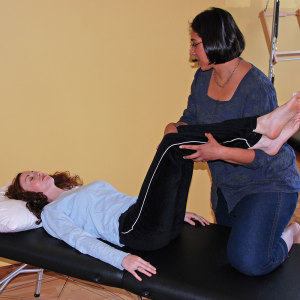
IMT incorporates aspects of many different osteopathic and holistic hands-on therapies. Using extremely gentle, subtle pressures, and working with various rhythms of the body, IMT restores structural integrity of tissues, organs, muscles, vessels, and bone. This sets your body up for optimal functional performance.
One way to understand IMT is to imagine a piano and a musician. Even the best pianist won’t sound her best on a poorly tuned piano, while a terrible musician could sound passable on a great instrument. IMT is the piano tuner: treatment restores the full functional potential of your body.
IMT applies this approach to every body system: muscular, lymphatic, digestive, cardiovascular, renal, neurological, immune, etc. There are thousands of manual techniques that can be used to address biomechanics, dysfunction and discomfort.
Often people ask: how can you feel theses different rhythms? It is not unlike the connoisseur who can taste a glass of wine and tell you what kind of grapes it was made from, where the grapes were grown, the bottler and the year. An IMT therapist has trained his or her perceptual abilities to gain a tremendous amount of information simply by palpating the body.
IMT has been developed by Sharon Giammatteo, PhD, IMTC over the past thirty years.
How will I know that the therapy is helping?
You may see improvements in range, mobility, or pain. Please share these improvements with your practitioner so we can adjust your program appropriately.
What do I need to bring to my first visit?
- Completed re:fit forms (click here to download PT Forms)
- Prescription for physical therapy, if applicable (within 30 days of initial evaluation)
- Insurance card
How many sessions will I need?
It is important to come in with goals. Initially, your goal may be to eliminate pain. As treatment continues, many patients find themselves asking, “How healthy can I get?” The goal may progress from rolling over in bed, to walking without pain, to riding a bicycle (true story!). There is no easy answer to the question, “How long?”
How often should I come for IMT treatment?
This is dependent on your timeline, goals, and how acute your symptoms are. It takes a certain number of hours to get through a certain amount of treatment, and all sessions are at least an hour. Some clients prefer multiple hours at once. You may need one visit or you may need months of treatment. It depends on your diagnosis, the severity of your impairments, your past medical history, and your goals. You will be re-evaluated on a monthly basis and if you see your doctor, we will provide you with a progress report with our recommendations.
Can my pain or problem return?
IMT addresses the cause of your pain, not just the symptoms. Nevertheless, flare-ups can happen. Sometimes this is due to an acute new injury or event. But if it seems spontaneous, realize that in the IMT model a “flare-up” is often the body’s way of presenting another layer of suppressed dysfunction as you heal with treatment. If this occurs, give us a call. We help you determine whether it is best for you to come see us, return to your doctor, modify your daily activities or exercise routine, or some combination of all of these.
How does billing work at re:fit?
Payment is due at the time of service. You will receive an invoice to mail to your insurance company for reimbursement. The insurance company will generate an Explanation of Benefits (EOB) and send it to you with a reimbursement check.
Can you explain more about insurance coverage?
In most cases, health insurance will cover the sessions under your physical therapy benefits because the IMT practitioners are physical therapists. We are out-of-network providers. Coverage varies, but usually insurance will cover a percentage of the visit after deductibles are reached.
Under Illinois law, a diagnosis from a physician is required within a month of the initial evaluation. Many insurance companies require a prescription for physical therapy for benefits to be paid. After your first visit, your doctor will receive an initial evaluation to sign and return. This will become an active prescription.
At this time, we are not Medicare certified. This means Medicare or Medicare Supplements do not cover treatment at re:fit.
Pilates
Are your instructors certified?
Yes. All instructors successfully complete a minimum 600-hour certification program and annual recertification in continuing education.
Where do I begin with Pilates?
Your introduction to Pilates typically begins with a series of two private Introductory Package sessions. Once completed, you will most likely continue by taking private sessions until you’ve reached a level that will allow you to safely participate in a duet session. On occasion, clients begin with duet sessions.
In duet sessions there are two clients with one instructor. It can be enjoyable to work out with a friend!
What can I expect during my first private session?
Most new clients can expect a session beginning on the mat or reformer, and then transitioning to another apparatus, such as the High Chair or Cadillac. Sessions may finish with standing wall exercises. Sessions generally last 50-55 minutes.
How will Pilates address my individual fitness needs and goals?
We are all subject to gravitational forces on our spinal columns. When the muscles that support our spines are weak or tight, we experience this stress as stiffness, soreness and pain. Pilates addresses the needs of all bodies through a group of core-strengthening exercises that support the spine and pelvis. We will design custom exercises that address your individual needs.
What if I don’t feel like I’m doing it “right”?
Pilates is not about performance (how high, how big or how beautiful). It is about executing the exercises with mindful intent to improve function and strength. Like any new practice, Pilates takes a number of sessions to ‘get it,’ though you will immediately reap benefits simply by moving through the exercises. Your range of motion and ability to approach the ideal versions of the exercises will improve over time. The cues your instructor gives you and the equipment design itself will assist in finding the correct muscles.
How long will it take for me to see results?
“In 10 sessions you will feel a difference; in 20 sessions you will see a difference; and in 30 sessions you will have a whole new body,” said Joseph Pilates about his exercise program. This now famous ‘Pilates Promise’ emphasizes the value of consistent Pilates exercise. Although daily Pilates may not be practical for most people, you can still achieve breakthrough results by establishing consistency in your workouts. From your very first private session, our instructors will give you detailed instruction that facilitates your safe transition from private sessions to more affordable duets; making more frequent workouts (ideally two to three times a week) possible. Independent workouts can be an end goal. By working with you to determine the right balance of sessions that will accommodate your goals, budget and lifestyle, re:fit makes it possible for clients to quickly feel the difference, gradually see the difference, and eventually experience ‘a whole new body’ and reap the promise of Pilates.
Neuro Emotional Technique (NET)
How do I learn more about Neuro Emotional Technique (NET)?
Learn more about NET by visiting their website at https://www.netmindbody.com/more-information/what-is-net/
GYROTONIC®
What is the difference between Pilates and this method?
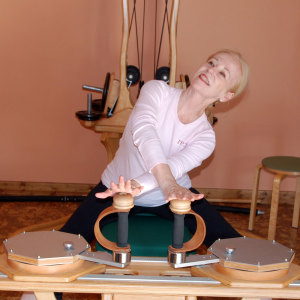
Pilates and GYROTONIC® exercises are each complete systems of mind-body movement. Both use equipment and mat or stool exercises, however the Gyrotonic® method is three-dimensional and circular while Pilates is linear in nature. With similar benefits also derived from swimming, dance, tai chi and yoga, Gyrotonic® exercises strengthen the body’s core muscles from the inside out. The Gyrotonic® method develops increased functional strength and flexibility, while developing coordination, neuromuscular control, and a re-shaping of the entire body.
Can you do this if you are totally out of shape?
Absolutely! We are skilled at making the basics accessible to everyone and providing the right level of challenge to each of our clients. Gyrotonic® exercise is especially effective for those with scoliosis.
How often should I do this type of exercise?
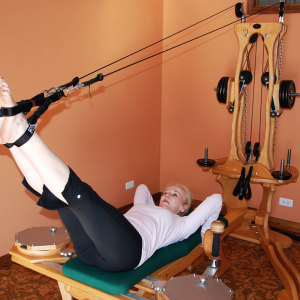
We recommend 2-3 workouts per week. However, that could mean coming in to the studio twice a week and then doing a home workout program once a week on your own. What is important is that you participate in the activity a few times per week so your body has a chance to assimilate the new information you are giving it. Doing anything once a week gives your body six days to forget what it has learned, leading to a slower rate of progress.
Are your teachers certified?
Yes, they have successfully completed the formal training.
Ayurveda
What is Ayurveda?

Ayurveda is a 5,000 year-old Indian form of medicine and lifestyle. The root word stems from the science or study (veda) of life (ayur). Ayurveda provides guidelines on ideal daily and seasonal routines, diet, behavior, and the proper use of our senses. Ayurveda reminds us that health is the balanced and dynamic integration between our environment, body, mind, and spirit. Ayurveda offers a body of wisdom designed to help people stay vital while realizing their full human potential.
What is dosha?
Doshas are fundamental energies of the human body that govern the physio-chemical and physiological activities. The dosha theory describes how the five elements in nature (earth, water, fire, air and ether) combine to control the processes of the body and mind. There are three doshas, known as vata, pitta and kapha.
- Vata is the energy of movement and action
- Pitta is the energy of transformation, digestion, and heat
- Kapha is the energy of stabilization, cohesion, and nourishment
The human body has a natural healing intelligence capable of constant rejuvenation. However, doshic imbalances allow toxic impurities to form, blocking the natural capacity to heal.
For each element, there is a balanced and imbalanced expression. When Vata is balanced, a person is lively and creative, but when there is too much movement in the system, a person tends to experience anxiety, insomnia, dry skin, constipation, and difficulty focusing. When Pitta is functioning in a balanced manner, a person is warm, friendly, disciplined, a good leader, and a good speaker. When Pitta is out of balance, a person tends to be compulsive and irritable and may suffer from indigestion or an inflammatory condition. When Kapha is balanced, a person is sweet, supportive, and stable; but when Kapha is out of balance, a person may experience sluggishness, weight gain, and sinus congestion.
Ayruveda helps determine the source of the imbalance – internal, external or both – and helps you regain balance through proper diet, lifestyle and routine.



What is prakriti?
Each person has a unique proportion of Vata (air), Pitta (fire), and Kapha (earth). This is prakriti. Your prakriti is your body constitution. It is determined at the time of conception and does not ever change. Your prakriti does not cause any disease, but it can help determine how to treat disease that occurs within you. It also influences what diseases you are prone to acquire.
Your prakriti also influences how outside stimuli affect your body. Have you ever wondered why a friend or sibling swears that the key to health comes from a specific herb or treatment, but when you try it, it doesn’t change your symptoms, or may even make things worse? That’s because you have different prakritis.
Why is it important to know your prakriti?
Prakriti is the reason each person responds differently to the same treatment with the same diagnosis. Knowing your prakriti will help you find the appropriate remedy for a given disease as well as the diet, lifestyle and routine that will allow you to maintain balance in your life. When you are balanced, your body feels better and your relationships can improve.
Know your prakriti so you can:
- Understand your disorder tendency and how your body reacts to stressful stimuli
- Understand proper diet, herbs and exercise appropriate to maintain balance
- Establish an appropriate life regime
- Find the ideal place to live and work
What results should I see from practicing Ayurveda?
By embracing Ayurveda, you will feel empowered to break unwanted habits and patterns. You will learn:
-

learn to have joy with your food choices What to eat and when, and how to adjust cooking according to the needs of you and your family
- Appropriate exercise for your constitution and the season
- The appropriate use of natural herbal formulas to resolve health conditions, which may allow you to wean off some long-term prescriptions
- How to use natural herbal skin care regimens
- How to deal with stress
The results of your new habits may include:
- The reduction of symptoms from chronic conditions (e.g. anxiety, irritable bowel syndrome, skin conditions, migraines, allergies, hypertension, arthritis)
- Healthier and stronger bones, nails and hair
- Glowing skin
- Balanced hormonal rhythms
- Improved sleep quality
- Improved immunity
- Improved time management skills
- More peaceful relationships
How long until I see results?
Results may be felt within days or it may take months. This will depend upon the chronicity and nature of the illness or dysfunction.
How does Ayurvedic medicine integrate with western medicine?
Ayurveda is designed to complement rather than replace conventional medical treatments. Western medicine traditionally prescribes pharmaceuticals to relieve symptoms, which can be helpful in the short term. Ayurveda treats the root causes of illness so the symptoms do not return. As a direct result of employing the principles of Ayurveda, patients often realize benefits that make a profound and positive impact on the quality of their lives within months, even if they have suffered for years.
Who will benefit from a consultation?
Anyone seeking to experience better health through a balanced lifestyle would be an ideal candidate for an Ayurvedic consultation. Ayurveda takes time, energy, and commitment. Although it can be incredibly helpful on an acute basis, the ideal ayurvedic client is seeking long-term sustainable change. Our aim is to empower our clients to put their healing back into their own hands and hearts.
Feldenkrais® Method
Who benefits from the Feldenkrais® Method?
Anyone can benefit from the Method. Feldenkrais® is beneficial for those experiencing chronic or acute pain, as well as for healthy individuals who wish to improve physical performance. It is helpful in dealing with central nervous system conditions such as multiple sclerosis, cerebral palsy, and stroke. Many Seniors enjoy using it to retain or regain their ability to move without strain or discomfort.
Through lessons in this method you can enjoy greater ease of movement, an increased sense of vitality, and feelings of peaceful relaxation. After a session you often feel taller and lighter, breathe more freely and find that your discomforts have eased. You experience relaxation, and feel more centered and balanced.
How does the Feldenkrais® Method differ from massage and chiropractic?
Feldenkrais® is very different. Massage therapists work with muscles, while chiropractors work with bones. The Feldenkrais® Method works with your nervous system, improving your ability to regulate and coordinate your movement. This is referred to as a functional approach to improve the use of your body taking structural considerations and limitations into account. The Feldenkrais® Method explores non-habitual patterns of movement for optimal mobility.
Can you give me some background on who developed this method and how it came about?
Moshe Feldenkrais became one of the first Europeans to earn a black belt in Judo (1936) and to introduce Judo in the West through his teaching and books on the subject. He also studied intensively in psychology, neurophysiology, and other health-related disciplines. After suffering crippling knee injuries, Feldenkrais merged his acquired knowledge with his deep curiosity about biology, perinatal development, cybernetics, linguistics, and systems theory. He taught himself to walk again and in the process developed an extraordinary system—the Feldenkrais® Method—for accessing the power of the central nervous system to improve human functioning.
